nn
n
n
n
n When I was a boy, maybe eight or nine years old, Inhad two favourite books, books which I had chosen to read for myself rathernthan having been told to read them by grown-ups. The first one was My Sidenof the Mountain by Jean Craighead George, which is the story of SamnGribley, an American teenager who goes to live in the Catskill mountains,nsurviving on what he can forage and hunt, and living in a hollowed out hemlockntree. I loved this book and virtually memorised it; I wanted to be Sam and liveninside a tree but I knew my mum wouldn’t let me (after all, I was only eight or nine).
n
n
n
 |
| Jean George – My Side of the Mountain |
n
n
n
nSo, I decided I would get asnclose to it as I could. I learned all the skills that Sam had had to learn; Incould make fire in at least half a dozen different ways, I learned whichnberries were safe to eat and which should be avoided, I learned thenconstellations in the night sky and how to navigate by the stars. But Sam hadnone thing that I could never have – a trained peregrine falcon. If you lived inna two-up-and-two-down in Mill Hill, Blackburn during the sixties, you wouldnnever get to have a falcon of your own. But that didn’t stop me learning about them.
n
n
n
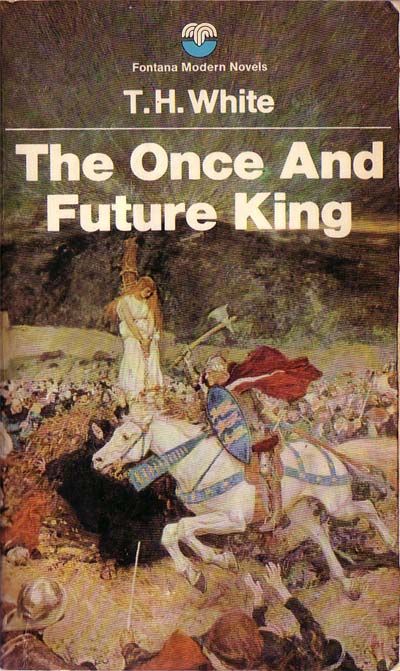 |
| T H White – The Once and Future King |
n
n
n
nWhich brings me to the second book. I was taken to see the Disney film ThenSword in the Stone at the local fleapit and I was fascinated by it. Wartn(who would grow up to be King Arthur) learned about the natural world by actually becoming the creatures themselves,ncourtesy of Merlin’s magic. And, there was a book from which the film had beennmade, T H White’s tetralogy The Once and Future King. The first part, ThenSword in the Stone, was brilliant, if a little hard going, and the laternthemes and language in The Queen of Air and Darkness, The Ill-Made Knightnand The Candle in the Wind were maybe a little too adult for a nine yearnold although it was still a marvellous book.
n
n
n
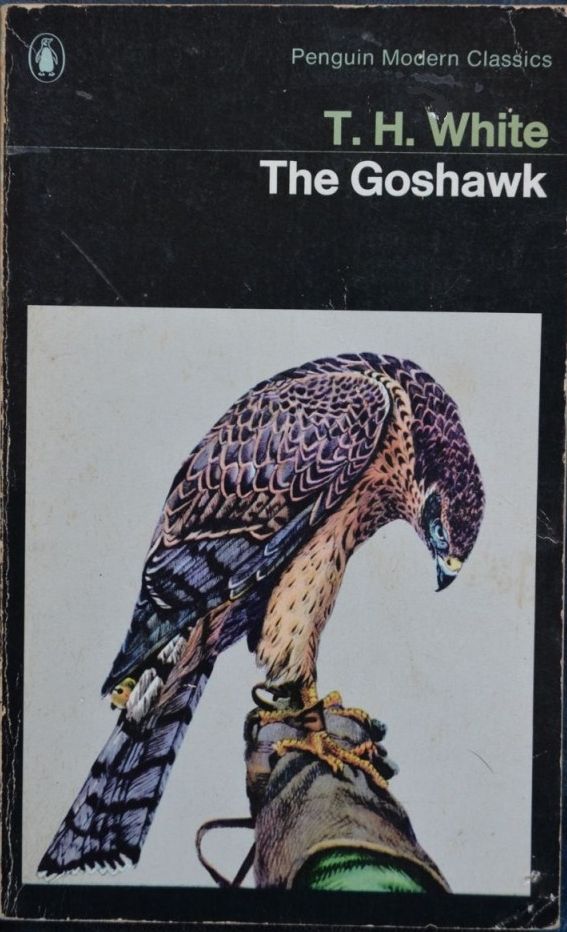 |
| T H White – The Goshawk |
n
n
n
nIt led me to another of White’s books,nThe Goshawk, which attracted me because it was also by White but it wasnalso about falcons, which made it a winner on both counts. It is an account ofnhow White trained the eponymous goshawk in the way of the old-style,ntraditional falconers, sitting up with the bird on his fist for days and nightsnon end until the wild creature was so tired that it had no other choice but tonput its trust in the man and fall asleep.
n
n
n
nThe two beings, man and bird, learnnfrom each other and become almost a single entity, tied by trust and respect.nIt is a grown-up book, with many, many layers, and the nine-year-old me learnednfrom it that books didn’t always just have to tell stories. One of the mostnfascinating parts of White’s narrative is the language of the falconers, and Inalso learned that some of our common words and expressions came from totallynunexpected fields.
n
n
n
 |
| Sir Thomas Browne – Of Hawks and Falconry – 1684 |
n
n
n
nTake, for instance, the word ‘bate’ – when a birdnin the hand becomes frustrated, surprised, angry or bored, it will attemptnto fly off the fist but, because it is restrained by leashes around its legsn(the jesses), it will hang upside down, beating its wings furiously –nthe bird is said to ‘bate’. If one gets oneself into a fury or panic you are said tonget ‘into a bate’. You don’t really hear it too much these days,nalthough I have heard it used in this sense; Shakespeare uses in ThenTaming of the Shrew,
n
n
n
n“These kites that bate and beat and will not benobedient.”n
n
n
nIt is related to words like beat, batter and battle, and goesnback to at least 1398 – it is used in Trevisa’s translation of BartholomeusnAnglicus’ De Proprietatibus Rerum (On the Properties of Things),
n
n
n
n“Alsonthe eyen [eyes] of such birds should oft be seled and closed, or hid,nthat she bate not too oft from his hand that beareth her.”n
n
n
nTo be confined,nso as to prevent bating, is to be abated, and we use this meaningnwhen we hold our breath in anticipation – we wait with bated breath (andnnot, as some may write, baited breath, which is simply nonsense).nAnother way of keeping hawks and falcons calm and quiet is to cover their eyes,nas this prevents them from seeing anything that might alarm them and cause themnto bate.
n
n
n
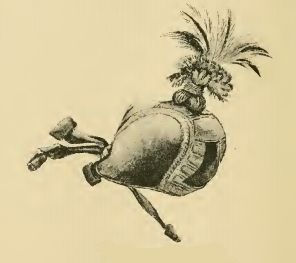 |
| Hood |
n
n
n
nThe universal method of doing this is to place a hood, usually madenfrom leather and often decorated, over the bird’s head and eyes. Thus, the birdnis hoodwinked – it is deceived into thinking all is well.
n
n
n
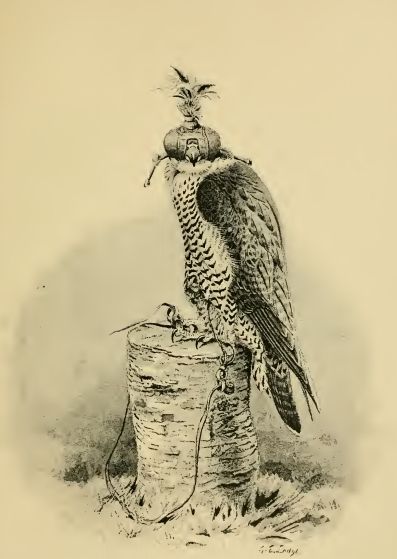 |
| A Hoodwinked Peregrine |
n
n
n
nFrom the samenidea of keeping the bird safe by covering its eyes with a hood, and derivednfrom the diminutive of the French chape – a hood or cape – comes thenword chaperon, an older person who accompanies a younger person to keepnthem from harm (as a chaperon usually attends a young woman, and is often annolder woman, the English, incorrectly, add an unnecessary feminising ‘e’ at thenend, spelling it as chaperone).
n
n
n
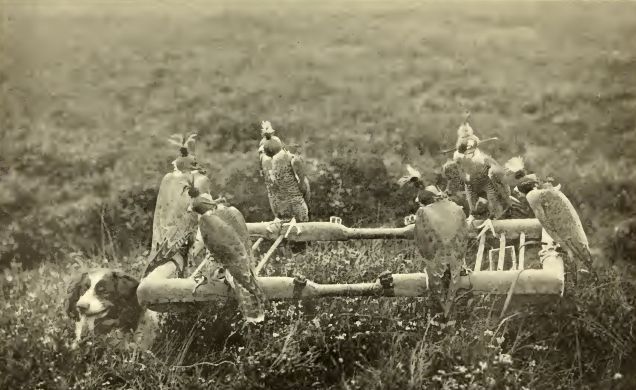 |
| Hooded (and chaperoned by a spaniel). |
n
n
n
nHawks and falcons were kept in specialnhouses, where they were allowed to moult– muer in French – in safety,nand these came to be known as mews; you’ll sometimes see rows ofncottages called Something-or-other Mews (usually in the morenaspirational, gentrified parts of town).
n
n
n
 |
| Jesses |
n
n
n
nThe leashes, the jesses, thatnare fastened around the legs of a bird to stop it from flying away are firmlynheld in the falconer’s fist on which the bird sits. The jesses are grippedntightly between the thumb and the palm of the hand – they are ‘under thenthumb’ – and just to be on the safe side, to make sure that bird is totallynunder control, the jesses might be ‘wrapped around your little finger.’
n
n
n
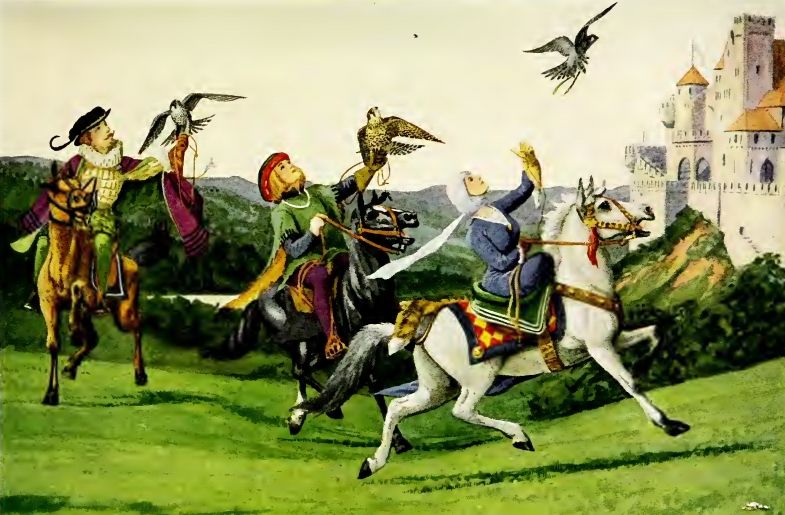 |
| Hunting with Hawks |
n
n
n
nFor hawks and falcons to hunt efficiently, they need to be hungry but if givennhalf a chance a bird will eat as much meat as it can, filling up its crop, thenpouch in which birds start to digest their food, which are covered in feathersncalled the gorget (which, incidentally, is where the name for throatnarmour derives) and hence a bird which eats too much is said to gorgenitself.
n
n
n
nAnd if a bird does gorge itself, it is pointless taking thenthing out to hunt with, as it is too full to be bothered chasing anything. It’snbest to leave it in the mews, where it will become bored and won’t want to donanything – and that is because it is fed-up.
n
n
n
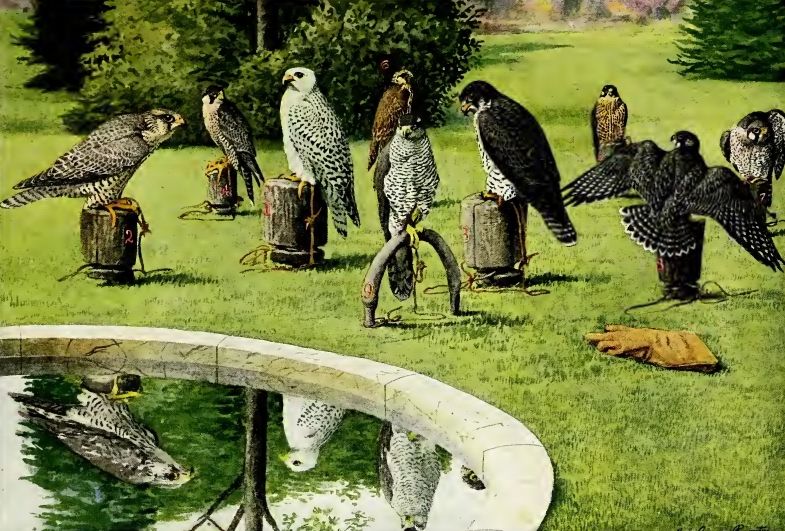 |
| Roused and Ready |
n
n
n
nHowever, if your falcon hasnnot gorged itself and it is ready for work, it will wake up, stretch and shakenits feathers, it will rouse itself, a word now generally used to wakenoneself up. If your falcon rouses itself and makes a kill, it will bringnit to the ground and stretch its wings over the prey, hiding it as it tries toneat it – it is said to mantle its wings and this sort of covering findsnits way into everyday language in such words as mantelpiece, thencovering on a chimney.
n
n
n
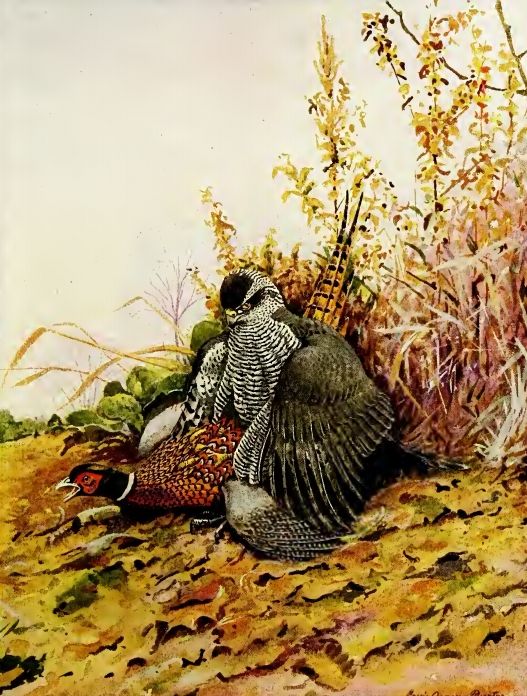 |
| Goshawk mantles a pheasant |
n
n
n
nYoung birds that are trained as hunting birds are raisednfrom captive breeding stock and young birds that lack feathers and are bald arendescribed as ‘callow’, a word that we now apply to any young andninexperienced youth.
n
n
n
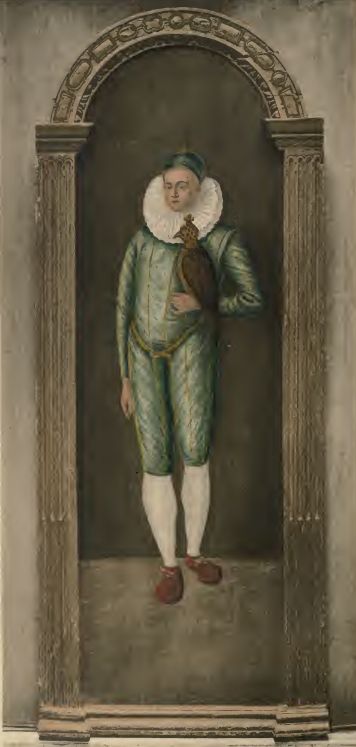 |
| A Callow Youth |
n
n
n
nBut if an adult bird is taken from the wild, captured andntrained after it has had some experience in the great, wide world outside, itnwas easier to catch them at the end of their migrations, when they were gaunt,ntired and bedraggled, when they were haggard.
n
n
n
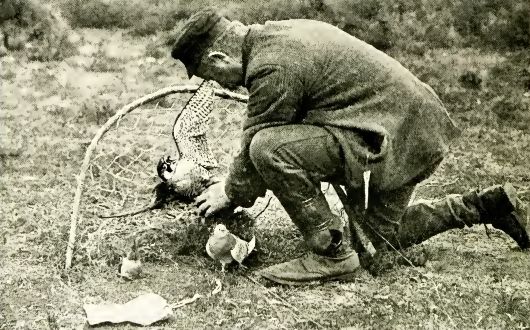 |
| Catching a haggard peregrine |
n
n
n
nWhen falconers themselvesnbecame old and haggard, they were quite often given menial duties to perform,nleaving the harder work to younger men. One of these jobs was to carry thenperches on which the falcons sat to the hunting field; these perches werencalled cadges, and the men who carried them were called cadgers,nthe word coming to mean someone who begs or cadges, as the position wasnpoorly or unpaid and the cadger would cadge what little moneynthey could manage to get.
n
n
n
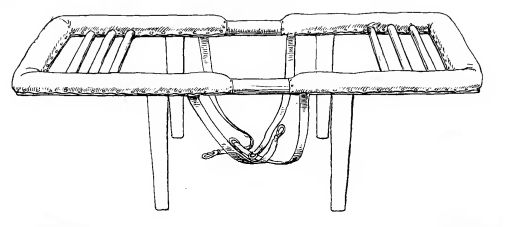 |
| A Cadge |
n
n
n
nOver time, the word passed on to mean any old man inngeneral – they were old codgers. There are other words and phrases thatnhave their origins in falconry, but I think that’s enough for one day and Inwill go away now or, to use one final term from the field, I shall turn tail.
nnn
n
n
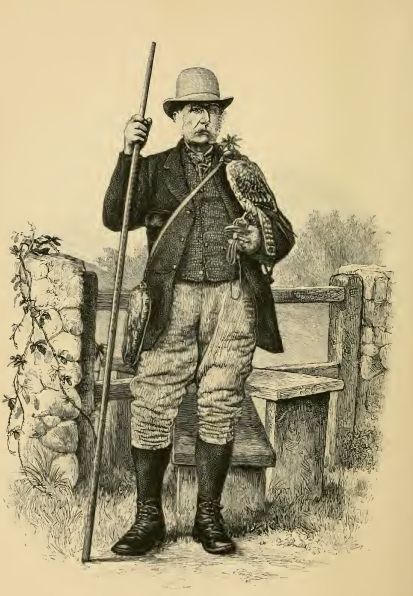 |
| A Codger ? |
n
n
nnn




















